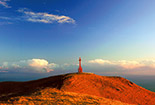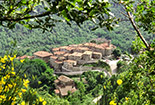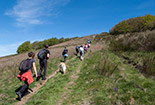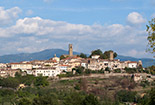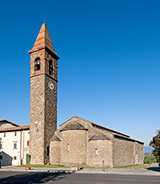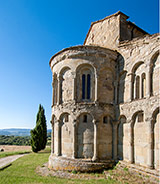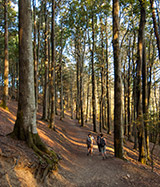Quota
in Casentino, a Tuscan valley with which you can get familiar in every detail through this site
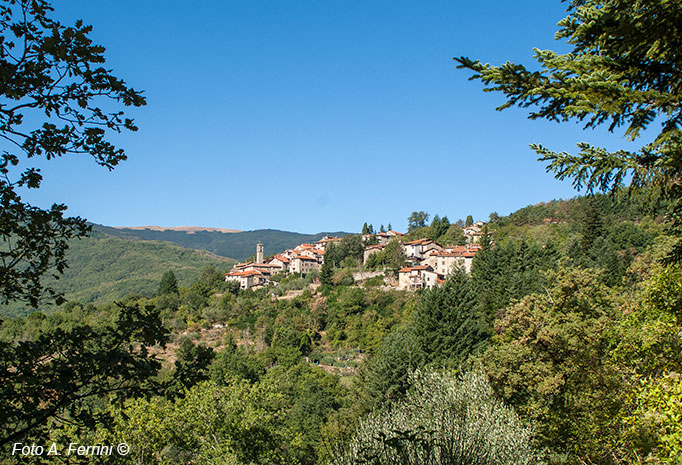
Texts and photos by Alessandro Ferrini ©
34 accurately described images of Quota. Click to enlarge
A cozy village on the Slopes of the Pratomagno: Quota
 Quota is a town located at 680 meters of height in the Municipality of Poppi. It is six kilometers away from the capital and is situated on the eastern slopes of the Pratomagno. Its panoramic view makes it easy to understand how this village is situated on this mount and which type of architecture we are going to visit. Quota (originally Coita) was built during the 16th and 17th century on Medieval castle remains. This "building history", which characterises other towns located on the slopes of the Pratomagno, leads to architectures very similar to each other. When they were aedificated, there was a need to build the most number of houses in an "assigned" area possible, which was the one surrounded by the walls of the castle. As a result, we have villages with very narrow streets, often steep and twisted, but they were totally fine for that period when they were to be travelled only by foot or at the worst by some donkey or horse. There was no need for drainage systems or for energy power cables. It is a type of architecture far from nowadays functionality canons, but characterised by great charm and pleasantness for those who go visit.
Quota is a town located at 680 meters of height in the Municipality of Poppi. It is six kilometers away from the capital and is situated on the eastern slopes of the Pratomagno. Its panoramic view makes it easy to understand how this village is situated on this mount and which type of architecture we are going to visit. Quota (originally Coita) was built during the 16th and 17th century on Medieval castle remains. This "building history", which characterises other towns located on the slopes of the Pratomagno, leads to architectures very similar to each other. When they were aedificated, there was a need to build the most number of houses in an "assigned" area possible, which was the one surrounded by the walls of the castle. As a result, we have villages with very narrow streets, often steep and twisted, but they were totally fine for that period when they were to be travelled only by foot or at the worst by some donkey or horse. There was no need for drainage systems or for energy power cables. It is a type of architecture far from nowadays functionality canons, but characterised by great charm and pleasantness for those who go visit.
As above mentioned, Quota was erected on the Medieval Castle of Coita, which had started to be built at the end of the 12th century by Counts Guid. It was constructed at the same time as other castles in this area in order to be able to face Counts Vescovi from Arezzo, whose domanis extended until the mount in front of it. These castles were therefore used to guard a sort of Gothic Line and the passing of people who crossed the Pratomagno in order to reach other places on the Valdarnese slope of the mount. Unlike the near Castle of Raggiolo, which, before being submitted to the Republic of Florence around half of the 14th century, passed from the Guidi to the Ubertini and then to the Tarlati, the Castle of Coita belonged always to the same lineage until the Florentine domination. 
The Castle of Coita itself had been built around another preexisting tower that had been there for about six-hundred years. It was a tower built by the Goths for looking over this territory and later it became a Lombards' domain in the 7th century. This means that six centuries before the Guidi, other people had identified this place as a strategic point for the control over a vast territory. This tower, which later became the Medieval Castle tower, is clear evidence of a Barbaric settlement in this area. Therefore, here we have an automatic explaination for the presence of a church, nowadays only its ruins, dedicated to Saint Angel, which is the abbreviation for Saint Michael Archangel (who was the most largely worshipped Saint by North Europe Barbaric populations), in the proximity of Quota. These ruins are located along the ancient path that goes from Quota to the near town of Raggiolo and crosses the Teggina torrent through the Medieval Usciolino bridge.
Nowadays, Quota shows almost nothing of its fortified past. Evidence of this may be found in documents, the most ancient of which dates back to 1191. During the 16th and 17th century this town had its rebirth characterised by what today we see as its most distinguishing architectural part. The ancient castle walls were a convenient stone quarry for building the new houses, several of which do not have foundations because they are lied on the large rocky spur located at this point of the mount or on the base of the castle walls. The main reason why Quota deserves to be visited is with no doubt its architecture, characterised by perfectly paved and ordered streets and alleys that intersect in a continuous ups and downs. The images of this section will give a clear idea of what Quota can show to the visitor. This village is located along the most known and traveled road from the Casentino and leads to the Pratomagno. This hamlet is really worth a stop for those people who go or come back from the top of this fascinating mount. Such a break can also be a reason for a snack based on typical products from "Paneolio", the only small shop of the town.



